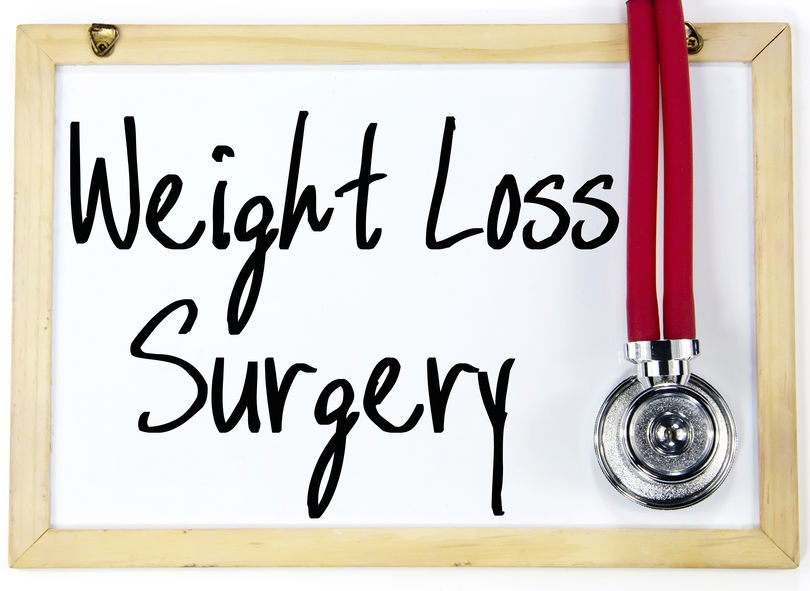
A good number of the US population is struggling with the problem of obesity since they understand the dangers that come with being overweight. Obese people are those that have a body mass index of 35 to 40, making them eligible candidates for bariatric surgeries. However, it should be noted that although one may fall into the eligible BMI category, this does not guarantee them a safe pass to some of these surgeries. Weight loss surgery should come last after other forms of weight loss such as dieting and exercise have failed to show any significant change. These surgeries go from invasive, minimally invasive to least invasive. This article mainly focuses on the least invasive weight loss surgeries you should consider.
- Gastric Balloon
This type of bariatric surgery is completely noninvasive since it does not involve any incision whatsoever. The patient is sedated, while a plastic balloon is inserted into the stomach through the mouth. After the balloon has settled into the stomach, it is inflated with a saline solution. The balloon stays in the stomach for a few months, after which it is removed and replaced with another. It can be removed earlier, depending on your body’s reaction to this foreign body. The balloon occupies the largest part of the stomach, hence reducing the amount of food the patient takes by up to 70% because the stomach feels full, with just a few ounces of food intake. With time, satiety levels in the patient reduce and what follows is reduced weight. Although some patients may experience nausea or mild abdominal pain, the procedure has proven successful in most patients who have had the surgery.
- Gastric Sleeve
This type of surgery is minimally invasive since it involves the removal of the larger part of the stomach and remaining with just a long thin part, taking the shape of a sleeve. The result is that you lose lots of weight because you feel fuller and get satisfaction with just a few ounces of food intake. The amount of calories absorbed into the body is also reduced, and this results in weight loss. The largest weight loss comes from the fact that the part that is responsible for hunger producing hormones is removed. The desire to take food is also reduced.
- Lap Band
This type of procedure is minimally invasive because it involves placing a lap band in the stomach by making small incisions using laparoscopic tools. The band occupies the larger part of the stomach, thereby reducing the amount of food and calories you take. You feel fuller after taking just a couple of ounces of food. Since the part of the stomach that is tasked with hunger hormones, this leads to reduced satiety and you take less food thereby losing weight.
- Endoscopic Sleeve
Just like the name suggests, the procedure involves making small sutures in the stomach, with a shape of a sleeve, using an endoscopic camera and a suturing device passed through the patient’s mouth. The sleeves reduce the size of your stomach, hence reducing the amount of food and calories you take, due to a decreased satiety level. This is because you feel fuller after taking just a few ounces of food a day. The procedure has proved to be successful in the majority of the patients who have undergone the surgery, with the only side effects being the feelings of nausea and abdominal pain. The procedure has to be coupled with other weight loss methods like good dietary habits and workouts.
- Gastric Bypass
As the name suggests, the procedure involves removing the larger portions of the stomach and small intestines, to make a small pouch. The remaining stomach or the pouch is attached to the large intestine, hence bypassing the small intestine. Since the small intestine is where most calories are absorbed into the body, the remaining small part of the small intestines absorbs only some few calories, while the reduction of the stomach reduces the amount of food you take. Coupled with other weight loss habits, gastric bypass leads to significant weight loss.
It is important to note however that as simple as some procedures sound, especially non-invasive ones like the weight loss procedures discussed here, they should not be administered to persons with conditions like high blood pressure, heart-related problems, and diabetes. Most of them do not have serious complications, not unless you have an underlying issue that the patient and the surgeon did not previously know about. It, therefore, means that you should present your health history to your doctor and try the best to disclose all the issues concerning your health.
The Weight Loss and Wellness Center can find the best weight loss option – surgical or non-surgical – that works for you and your health needs. Contact us today for a consultation, or call us at (973) 888-1085.

